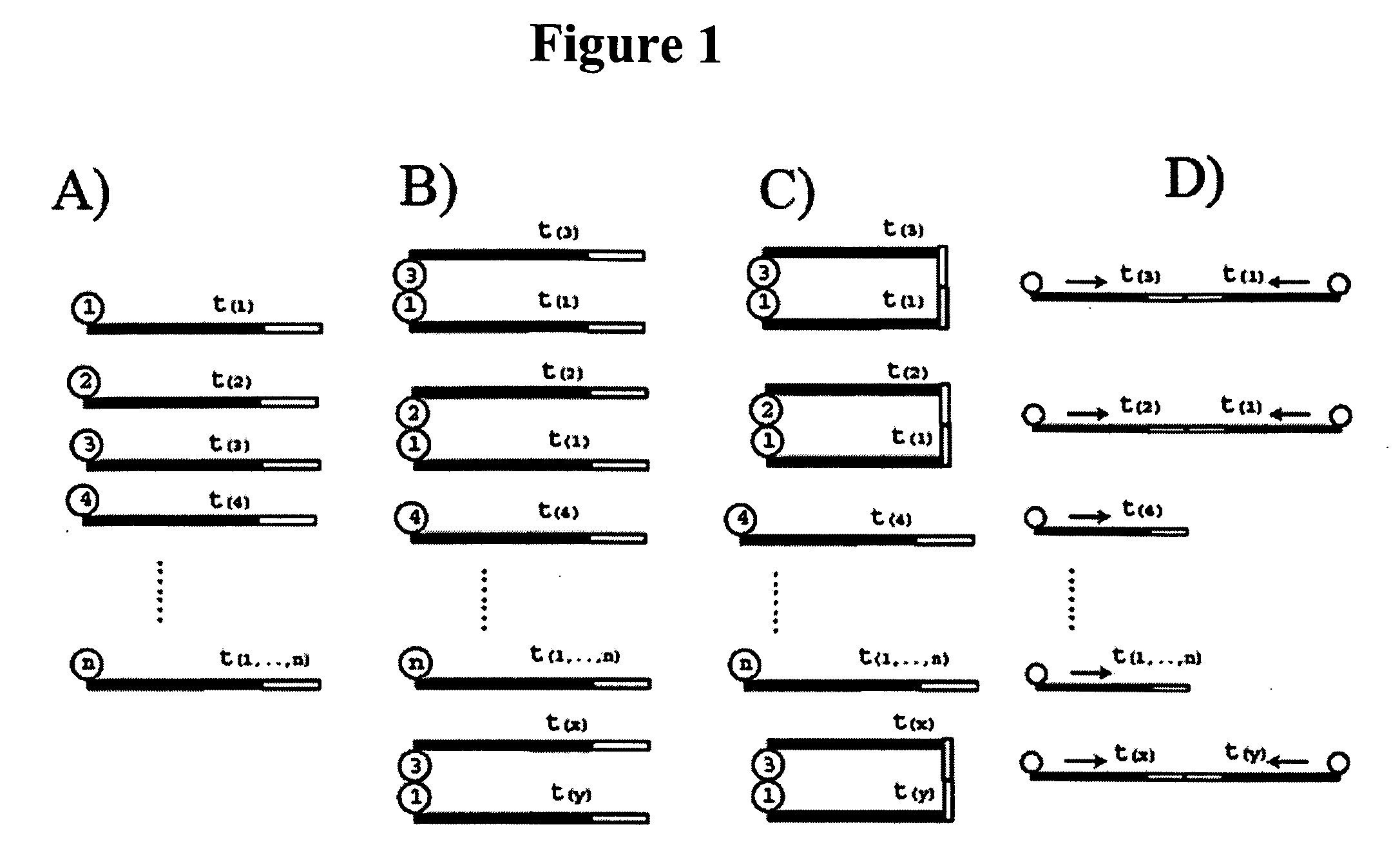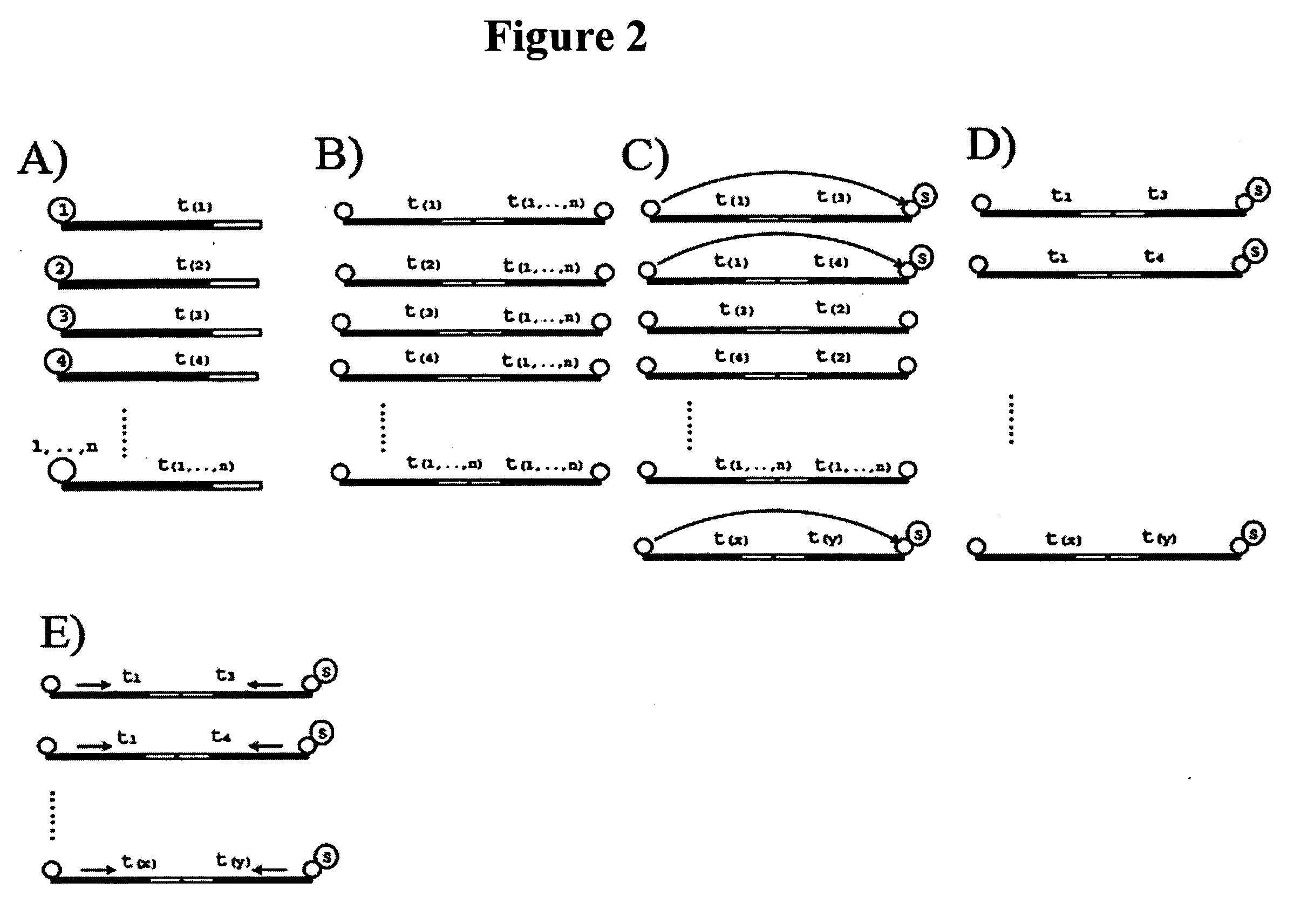Regulation analysis by cis reactivity, RACR
a cis reactivity and analysis method technology, applied in the direction of sugar derivatives, biochemistry apparatus and processes, material testing goods, etc., can solve the problems of affecting the interaction and/or protein conformation, limiting the possibility of inter- or intra-library interaction screens, and cost and labor-intensive data extraction. achieve the effect of facilitating high throughput analysis
- Summary
- Abstract
- Description
- Claims
- Application Information
AI Technical Summary
Benefits of technology
Problems solved by technology
Method used
Image
Examples
example 1
Affinity Interactions
[0136] This example illustrates embodiments directed to detecting affinity interactions.
[0137] The individual proteins to be investigated are produced by recombinant expression and purified. These proteins serve as MOIs in the library and are coupled with NAMs to form interactors.
[0138] The NAMs are double stranded DNA molecules and comprise a primer motif, a nucleic acid identification sequence and an association sequence. To enable amplification of all intra-library combinations, there are two sub populations of proteins created, one with the forward PCR primer and one with the reverse primer in their respective NAMs (FIG. 3). The nucleic acid identification elements in the two sub-populations comprised by the same protein are not identical, thus each protein is “encoded” by two nucleic acid identification elements in the library.
[0139] The individual NAMs are synthesized from two generic PCR products which comprise the general primer motif and spacer seq...
example 2
Functional Interactions
[0143] This example illustrates construction of a library of interactors and CRCs and detection of a specific enzyme-substrate functional interaction where one MOI acts as an enzyme and a second MOI is the substrate.
[0144] Enzyme substrate interactions can be difficult to distinguish with conventional approaches since the enzyme might have low or transient affinity to the substrate. A specific choice of enzyme-substrate pair is kinases and their respective substrates. For screening proteins for kinase and kinase substrate properties a library of interactors is constructed where the MOIs of the library are potential kinases and substrates respectively.
[0145] The interactor library comprises two sub-populations, the first comprising potential kinase MOIs and the second comprising potential substrate MOIs. Each sub-population of a potential kinase is conjugated to the 5′ end of a oligonucleotide subset comprising the forward primer motif for downstream amplif...
example 3
Reaction Discovery
[0149] In one specific embodiment screening for reactivity between molecules is provided. A library of molecules is subsequently screened for formation of chemical bonds between the library molecules. The procedure is similar to discovery of affinity interactions, however, in this embodiment, the interaction results in a covalent bond between the molecules. The embodiment enables reactivity screening in different reaction conditions and / or in the presence of catalysts.
[0150] The molecules of interest are each tagged with a single stranded DNA NAM to form the interactor library. Two sub types of interactors are constructed, comprising the same molecules of interest, one with free NAM oligonucleotide 3′ ends and one with free NAM oligonucleotide 5′ ends. These are constructed so that any free 3′ end can be joined with any free 5′ end by the addition of a DNA oligonucleotide template, complementary to each of the oligonucleotide sub types, by the addition of a liga...
PUM
| Property | Measurement | Unit |
|---|---|---|
| Strength | aaaaa | aaaaa |
| Affinity | aaaaa | aaaaa |
| Interaction | aaaaa | aaaaa |
Abstract
Description
Claims
Application Information
 Login to View More
Login to View More - R&D
- Intellectual Property
- Life Sciences
- Materials
- Tech Scout
- Unparalleled Data Quality
- Higher Quality Content
- 60% Fewer Hallucinations
Browse by: Latest US Patents, China's latest patents, Technical Efficacy Thesaurus, Application Domain, Technology Topic, Popular Technical Reports.
© 2025 PatSnap. All rights reserved.Legal|Privacy policy|Modern Slavery Act Transparency Statement|Sitemap|About US| Contact US: help@patsnap.com



